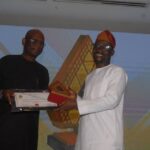The number of human cases of Guinea worm disease reported dropped from 30 in 2017 to 28 last year.
It is the lowest since the Carter Centre began leading the Guinea Worm Eradication Programme in 1986.
Back then, an estimated 3.5 million cases were reported each year in 21 countries in Africa and Asia.
“Each of these cases is a human being with a family and a life,” said Adam Weiss, director of the Guinea Worm Eradication Programme.
“These aren’t just numbers, these are people. This is why tens of thousands of volunteers, technical advisers, and staff are working in thousands of villages to find and contain the last cases of this miserable disease and show people how to wipe it out once and for all.”
Guinea worm, polio and yaws are three diseases currently targeted for eradication by the World Health Asseembly resolutions.
Only smallpox has been successfully eradicated across the world.
Last year, 17 cases of Guinea worm were reported in Chad, 10 in South Sudan and one in Angola.
No report was recorded in Ethiopia, which had 15 cases in 2017.
Mali has not reported any case since 2015. A lack of cases over a long stretch indicates transmission has been interrupted, but Mali is still considered endemic because for two reasons: few infections in domestic dogs and cats, and large areas that remain inaccessible to health workers due to insecurity, according to the Carter Centre.

 Join Daily Trust WhatsApp Community For Quick Access To News and Happenings Around You.
Join Daily Trust WhatsApp Community For Quick Access To News and Happenings Around You.


